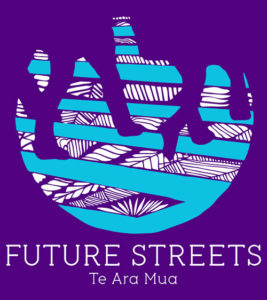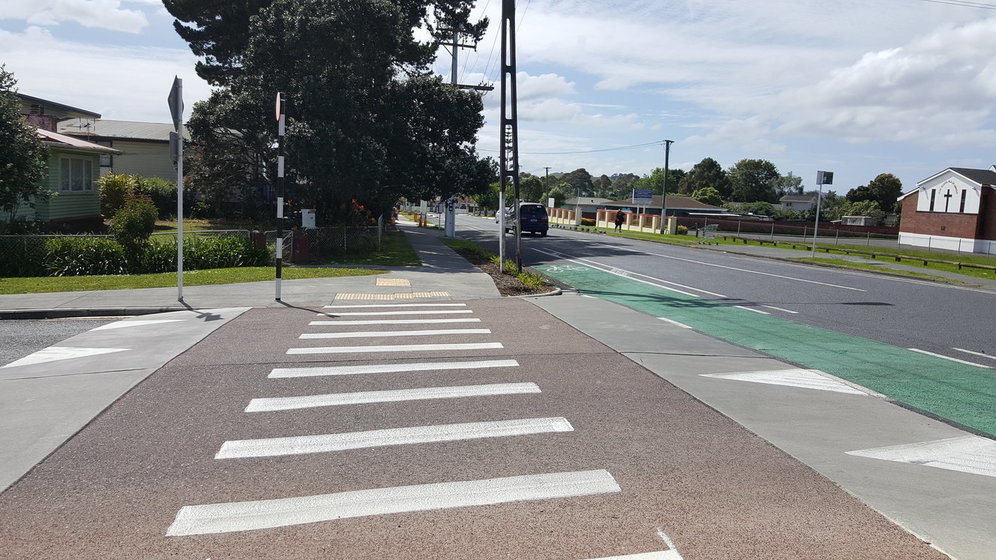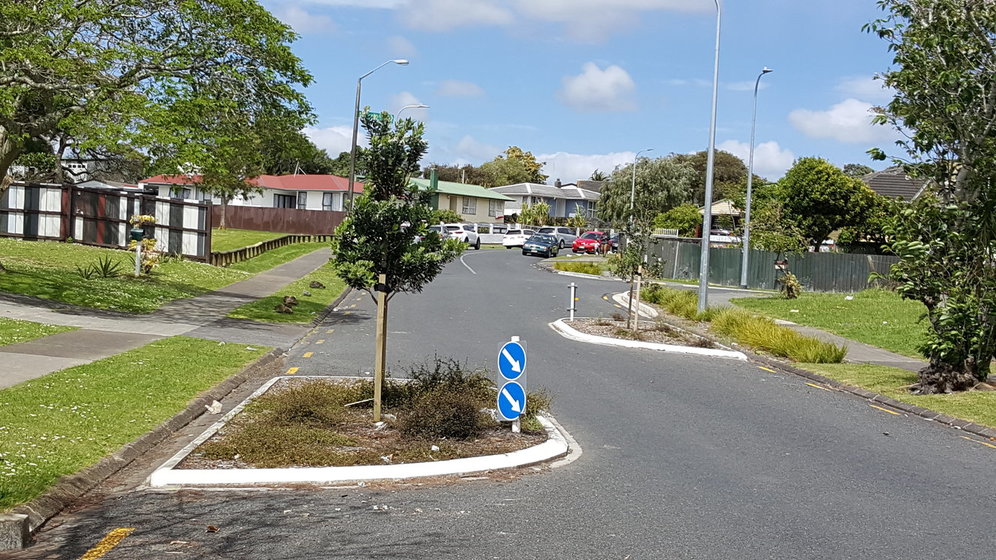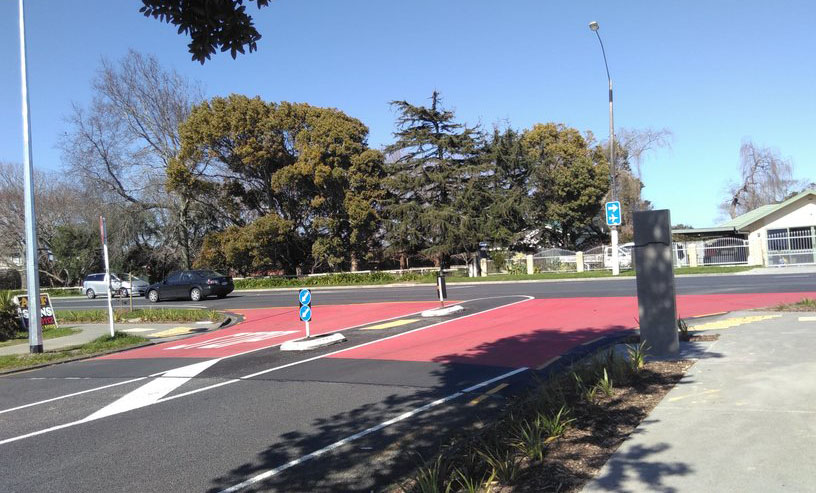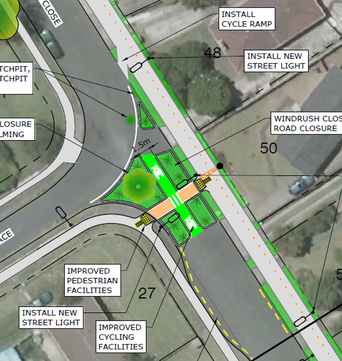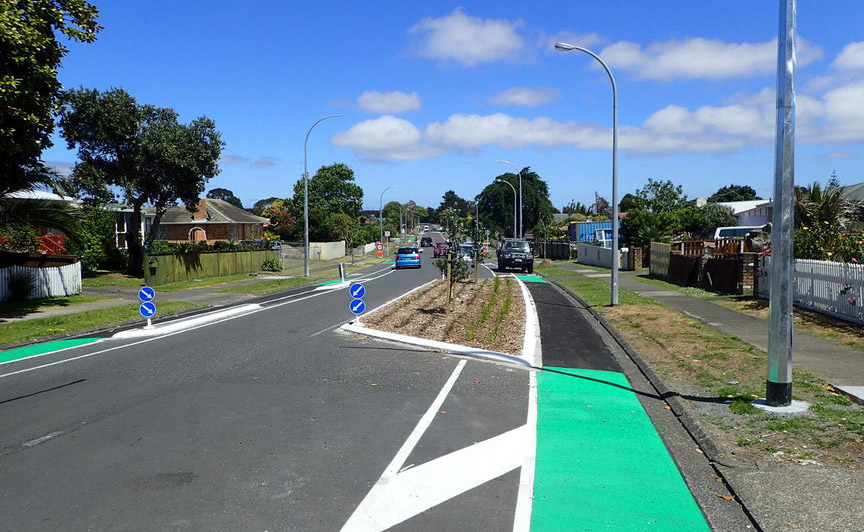What Were the Changes? » Calmer cars
Calming the cars

The “Self Explaining Roads” concept was followed in Te Ara Mua – Future Streets. Self Explaining Roads concepts have been used in other parts of Auckland, such as in Point England. This was not a design template for Te Ara Mua – Future Streets, but provided evidence to help with the design process. To read more about the results of the Point England study, click here and here.
Self Explaining Roads use physical design features to make it clear what road user behaviour is wanted for different street types – including slowing cars down when people are around. This is often referred to as Traffic Calming.
In Te Ara Mua, Traffic Calming was installed to:
-
reduce vehicle speeds, which is safer for everyone
-
make the environment more attractive and comfortable to be in for people walking and cycling
-
encourage people to walk and cycle more
-
help reduce the risk of crashes, serious injuries, and deaths
-
provide safer streets for children, especially near schools
-
make the streets safer for pedestrians and cyclists, especially near churches, recreation areas, and shops
The Traffic Calming Designs used in Te Ara Mua – Future Streets are described below. To learn how speeds were reduced on local streets, click here.
Raised tables and raised zebra crossings

Speed tables are essentially long, flat road humps. They are a raised section of the road and have ramps on each side. The presence of the speed table causes drivers to slow down to about 25km/h because it is uncomfortable to hit the hump at higher speeds.
Speed tables are the same width as the street and their height is the same as the footpath. Often a zebra crossing is placed on them. This means that they provide a safe and comfortable place for people using wheelchairs, walking sticks, and prams to cross the road.
To learn more about zebra crossings in Te Ara Mua – Future Streets, watch the video below.
To see how a raised zebra crossing on Mascot Avenue changed the location that pedestrians cross the road, click here. For a great example of how a raised zebra crossing works, check out the animation below.
© Elizabeth Press – StreetFilms.org
Chicanes and planted pinch points

Chicanes were installed in the form of plantings built into the road on Imrie Avenue near Jean Batten School (a primary school). The design of a chicane narrows the road and creates a tight curve on an otherwise straight road. This makes drivers slow down and pay attention to oncoming traffic. Chicanes were installed near the school so that people would drive more slowly.
This is really important for before and after school times when there are a lot of children on the footpaths and crossing the road. For a great example of how a chicane works, check out the animation below.
Similar to chicanes are planted pinch points which were installed along Friesian Drive and Imrie Avenue. They also make the road narrower and help to slow down cars. Often, what makes you feel a bit uncomfortable as a driver makes you drive more slowly and more safely.
Kerb build outs
Kerb build outs were placed on Imrie Avenue, Friesian Drive, and at the entrances of other side streets. The aim of these is to narrow the entrance to the road so that cars enter it in a slower and more cautious way.
They also discourage trucks entering the road, which is important for maintaining safe residential areas.

Red surface

A coloured surface change can help make road users aware of danger. In Te Ara Mua – Future Streets, the road surface was painted red at dangerous intersections where vehicles were driving too fast.
For drivers entering the local road from a main road (i.e. from Massey Road to Thomas Road or Massey Road to Friesian Drive), the red surface also serves as a visual clue that they are entering a slow speed area and that they need to drive more carefully.
Road closure

Previously a loop road, Windrush Close was closed to through traffic as part of Te Ara Mua – Future Streets. This decision was made because ‘boy racers’ used the road at high speeds, making it dangerous for other people walking, cycling, and driving.
In addition to the road closure, the footpath on Windrush Close was made wider.
The community was consulted about the road closure. Nevertheless, some people in the community do not feel like they were adequately engaged about the road closure. This is an ongoing problem in the design and delivery of projects in New Zealand. For more discussion about this issue, click here.
Speed Humps
Speed humps are rounded mounds on the road. They change the up-and-down level of the street, thereby making drivers slow down. A speed hump was used on Imrie Avenue near the intersection with Friesian Drive. It was placed just before a zebra crossing, to help slow drivers as they approached vulnerable users (i.e. kids crossing the road).

Bike Lanes

We know that if you can narrow the road down, then it makes cars go slower, and that makes it safer for everyone.
On Orly Avenue, Mascot Avenue, and Friesian Drive, this has been achieved by installing separated cycle lanes.
See the video below to find out more.
